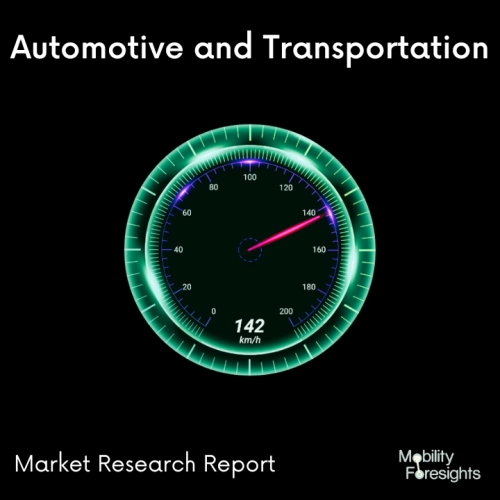
- Get in Touch with Us

Last Updated: Apr 25, 2025 | Study Period: 2023-2030
The term "Automotive Computer SoC" (System-on-Chip) refers to an integrated circuit made expressly for use in automotive applications, where it functions as the computer system's central processing unit (CPU) and includes a variety of other features.
A microprocessor or microcontroller, memory, input/output interfaces, and other specialized features designed for automotive use cases are all combined onto a single chip to form an automotive computer SoC, the following are some significant features of automotive computing SoCs:
Processing Power: Automotive computer SoCs come with strong microprocessors or microcontrollers that can handle challenging computing jobs. The performance demands of automotive applications, including infotainment systems, advanced driver-assistance systems (ADAS), telematics, and in-vehicle networking, are met by these processors.
Interfaces and Peripherals: To communicate with numerous parts and devices within a car, automotive computer SoCs integrate a broad variety of interfaces and peripherals. Ethernet, CAN (Controller Area Network), USB (Universal Serial Bus), HDMI (High-Definition Multimedia Interface), audio interfaces, and other technologies could be among them.
Safety and Security: To fulfill the demanding standards of the automobile sector, automotive computer SoCs prioritize safety and security features. They include encryption tools, secure booting, hardware-based security mechanisms, and real-time monitoring tools to guard against online dangers and guarantee dependable performance.

The Global Automotive Computer SoC Market accounted for $XX Billion in 2022 and is anticipated to reach $XX Billion by 2030, registering a CAGR of XX% from 2023 to 2030.
R-Car S4As E/E architectures develop into domains and zones, R-Car S4 enables the introduction of Car Server/CoGW with high-performance, high-speed networking, high-security, and high-functional safety standards.
Car R-H3eThe R-Car H3e is a high-performance automotive SOC that can accurately analyze massive amounts of data from car sensors in real-time. Its uses are numerous and range from integrated cockpits to in-car entertainment systems. There is also a 2GHz variant (H3e-2G) that offers more CPU power.
Car H3Ne RA, a more compact variant of the H3e with comparable location is the R-Car H3Ne. It has several peripherals optimized out and a narrower data throughput. It has a wide range of uses, such as integrated cockpits and in-car entertainment systems.
R-CarM3e: The R-Car M3e may be utilized in a variety of automotive applications that call for medium-class computing, such as central servers, low-end integrated cockpits, networked gateways, and in-car entertainment systems. There is also a 2GHz variant (M3e-2G) that offers more CPU power.
M3Ne R-CarThe R-Car M3Ne enhances the capabilities and efficiency of the R-Car M3e. It may be utilized in a variety of automotive applications that call for medium-class computing, such as entry-level in-vehicle infotainment systems, networked gateways, and digital clusters. There is also a 2GHz variant (M3Ne-2G) that offers more CPU power.
Car R-E3e: Entry-level applications can benefit from the robust graphics and multimedia features of the R-Car E3e SOC. For instance, it can implement driver monitoring systems, display audio systems, and digital instrument clusters.
| Sl no | Topic |
| 1 | Market Segmentation |
| 2 | Scope of the report |
| 3 | Abbreviations |
| 4 | Research Methodology |
| 5 | Executive Summary |
| 6 | Introduction |
| 7 | Insights from Industry stakeholders |
| 8 | Cost breakdown of Product by sub-components and average profit margin |
| 9 | Disruptive innovation in the Industry |
| 10 | Technology trends in the Industry |
| 11 | Consumer trends in the industry |
| 12 | Recent Production Milestones |
| 13 | Component Manufacturing in US, EU and China |
| 14 | COVID-19 impact on overall market |
| 15 | COVID-19 impact on Production of components |
| 16 | COVID-19 impact on Point of sale |
| 17 | Market Segmentation, Dynamics and Forecast by Geography, 2023-2030 |
| 18 | Market Segmentation, Dynamics and Forecast by Product Type, 2023-2030 |
| 19 | Market Segmentation, Dynamics and Forecast by Application, 2023-2030 |
| 20 | Market Segmentation, Dynamics and Forecast by End use, 2023-2030 |
| 21 | Product installation rate by OEM, 2023 |
| 22 | Incline/Decline in Average B-2-B selling price in past 5 years |
| 23 | Competition from substitute products |
| 24 | Gross margin and average profitability of suppliers |
| 25 | New product development in past 12 months |
| 26 | M&A in past 12 months |
| 27 | Growth strategy of leading players |
| 28 | Market share of vendors, 2023 |
| 29 | Company Profiles |
| 30 | Unmet needs and opportunity for new suppliers |
| 31 | Conclusion |
| 32 | Appendix |